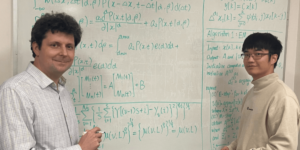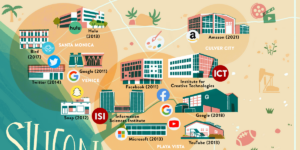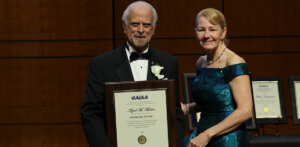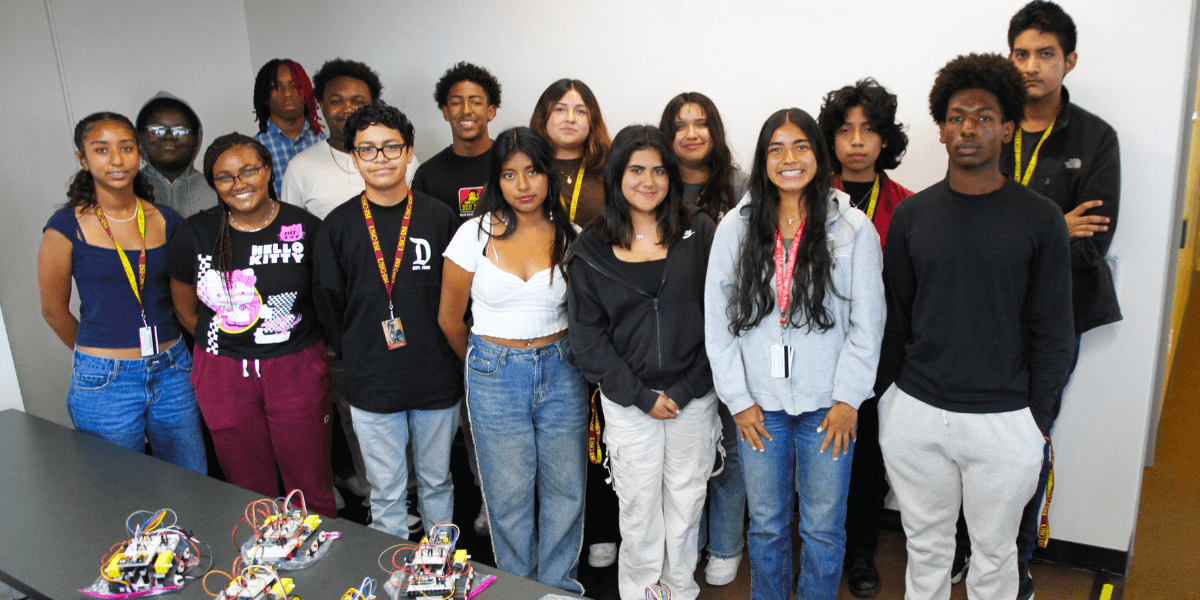
Photo Credit: USC ISI
This summer, 15-year-old Leo V., a rising junior at Orange Vista High School in Perris, California, embraced a rigorous routine. Each day he rose just before 8 a.m., ready to dive into a packed schedule of science and engineering courses. After 7 p.m., evenings found Leo back in the University of Southern California’s dorms, not winding down, but pushing ahead with an online Algebra II course — a strategic step towards tackling pre-calculus in his junior year.
Afterwards, Leo finally put away his work and wound down in the student lounge, hanging out and watching movies with a new group of friends. These moments quickly became the highlight of his summer. “Meeting people from all over, hearing their stories, and being able to interact with them 24/7,” Leo said, “that’s been the most interesting part of this program.”
A safe place to explore
Leo is one of 15 ambitious students attending Stimulating STEM, an intensive summer program hosted by USC Viterbi’s Information Sciences Institute (ISI) and supported by Capital One. Designed for underrepresented high schoolers, the program offers a safe and supportive space to explore cutting-edge STEM fields alongside peers and mentors from similar backgrounds. The environment not only encourages curiosity but also prepares students for future academic and professional settings where they might be the only minority in the room. The program, which ran from June 23rd to July 19th, 2024, is free for participants.
“This was the best summer,” said Stimulating STEM’s program director Jamani King, who has run the program for the past three years. “The experience the students had is what we envisioned for Stimulating STEM.”
Lisa Bland, the program’s lead coordinator, added, “This year’s group of students had a strong desire for knowledge and was excited to receive the information available to them. Their camaraderie bond with each other, the instructors, and staff was established early, which made the program a great success.”
For four weeks, the high schoolers live on USC’s campus, immersed in a multifaceted educational experience. Their days are filled with hands-on robotics workshops, intensive coding classes, and lectures on cutting-edge topics like AI and cybersecurity, taught by USC and ISI faculty members.
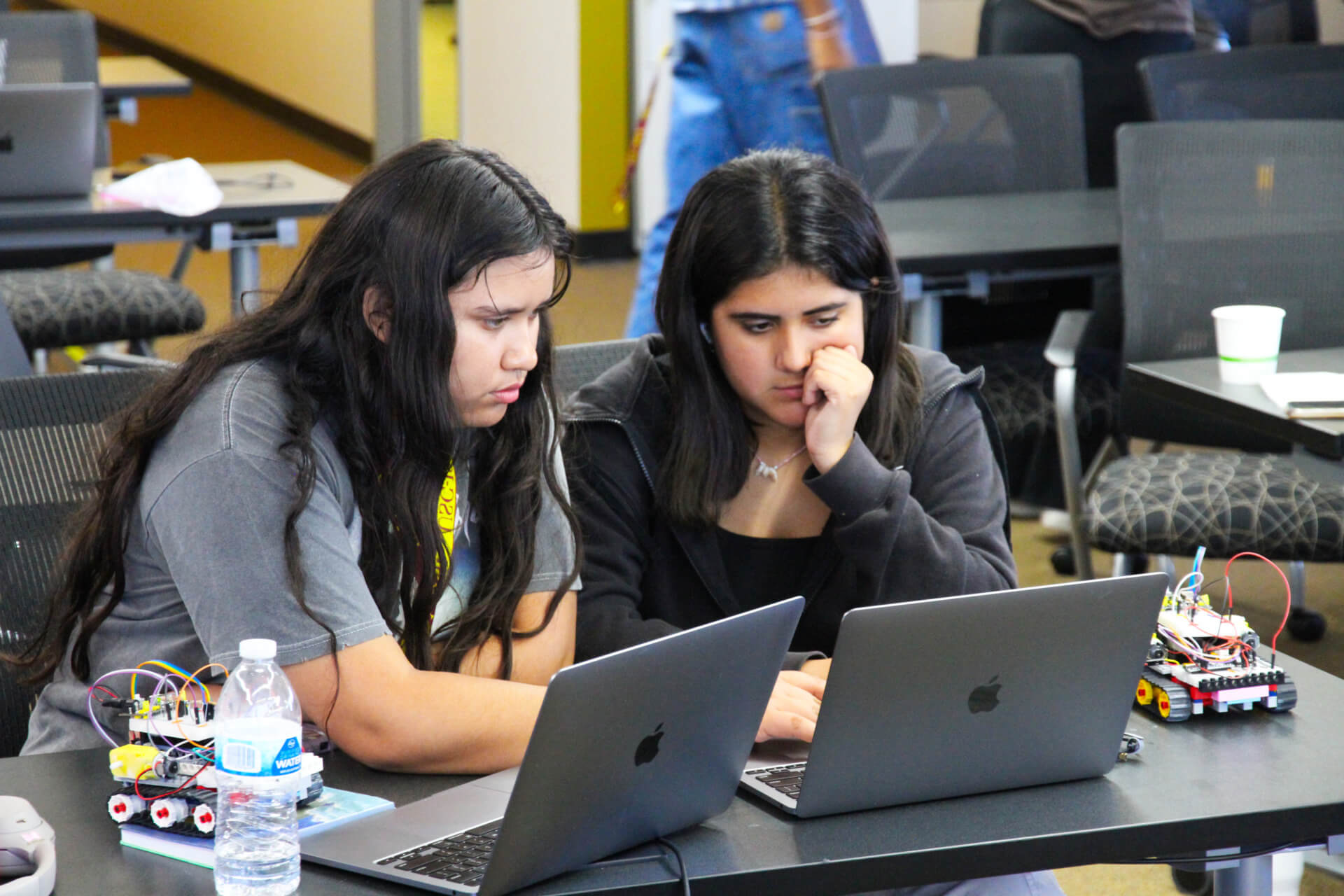
Photo Credit: USC ISI
Tinkering, building, coding
The robotics component of the program is a favorite for many students, including Leo, who was part of his middle school robotics team. Ever since third grade when his uncle first showed him a SpaceX launch on YouTube, Leo has aspired to become an aerospace engineer. “I’m fascinated by the rovers we have on Mars,” he said. “My ultimate goal is to send something I’ve made into space.”
Simone C., a rising junior at Immaculate Heart High School in Los Feliz, is also a builder by nature. During the academic year, she is hard at work doing light production for her high school’s musical theater club. Robotics scratches the same itch to figure out how components come together. “I like the physical aspect of building things,” she said.
Students also log weekly hours in the computer lab, tackling a semester’s worth of college-level coding in just 10 sessions.
For Jessica A., a rising senior from Francisco Bravo Medical Magnet High School in Lincoln Heights, it’s her first exposure to computer science. “It’s really enjoyable,” she said. “I had never done Python before this, but the way they’re teaching this coding language makes it understandable, even though it’s at a basic college level.”
Jessica’s newfound interest in coding reflects a deeper appreciation for the opportunities the program offers. “A lot of people in my family haven’t been to college and didn’t get the experience that I’m getting,” she said. “The fact that they gave me the opportunity to do this and expand my knowledge is very valuable to my education and future career goals.”
Inspiring project ideas
To inspire what is possible in STEM careers, the program also features lectures from ISI and USC faculty that illuminate diverse pathways in science and technology. In one session, Mayank Kejriwal, a research assistant professor at ISI, gave an overview of THOR, an AI for social good project designed to aid humanitarian efforts in regions with low-resource languages — those often endangered and lacking sufficient digital documentation and resources.
The lecture particularly resonated with Nayeli M., a rising senior at Anahuacalmecac International University Preparatory in El Sereno. Nayeli’s school is an indigenous charter school in East Los Angeles, where students learn in three different languages: English, Spanish, and Nahuatl, a centuries-old language spoken by the Indigenous people of Mexico.
To Nayeli’s surprise, Nahuatl — a language that has limited support from services like Google Translate — was part of this advanced research project, revealing how AI could be relevant to her community.
“Professor Mayank showed us how computing can apply to real-world problems, like with low-resource languages,” Nayeli said. “I really like it when STEM integrates with social issues because I’m also very passionate about social advocacy and justice.”
Meaningful Mentorship
Beyond academics, Stimulating STEM offers students a taste of college life and a chance to develop themselves through workshops, mentorship, and new friendships. “We want to make sure the students know how to govern their lives,” King said. “Computer science and engineering are not easy. You have to understand time management and planning.”
In workshops, students learn about navigating college life, from managing roommate relationships to dealing with perceived failures and maintaining personal wellness. Living together away from home, often for the first time, also provides a new experience where students learn to support and motivate each other. For students like Nayeli, whose graduating class has only 15 students, this social aspect can be eye-opening. “I’m talking to new people in this program. It’s getting me outside my bubble,” she said.
But more challenging life topics are often addressed in one-on-one mentorship sessions, where students can discuss anything and everything with caring adults who are invested in their success.
“One of the best ways to help students with personal development is to allow them to hear your life-story and share what steps you had to take to navigate into your career path, which is what many of our mentors and research leaders shared that inspired the students,” said Bland, the program’s lead coordinator. “The students were able to see their school path and career choice clearer after many of their sessions.”
For Maria C., a rising senior at Bell High School in Bell, California, mentorship and personal development has been particularly valuable, building her confidence as she pursues her dream of becoming a nurse.
Maria’s high school experience provides a stark contrast to the engaging environment of Stimulating STEM. She attends a Title 1 school — a public high school receiving additional federal funding due to its high enrollment of low-income students. According to Maria, it’s a big school where many students “don’t know how to act,” making it challenging to get a quality education.
Despite these obstacles, Maria is leaving this summer with a boost. “I struggle a lot with myself. Nursing is very competitive, and I feel like I’m probably not going to get in,” Maria said. “But my mentor, Ms. Jamani King, saw my passion and told me I could do it if I put my mind to it. She has helped me realize I have potential to do more than I expect.”
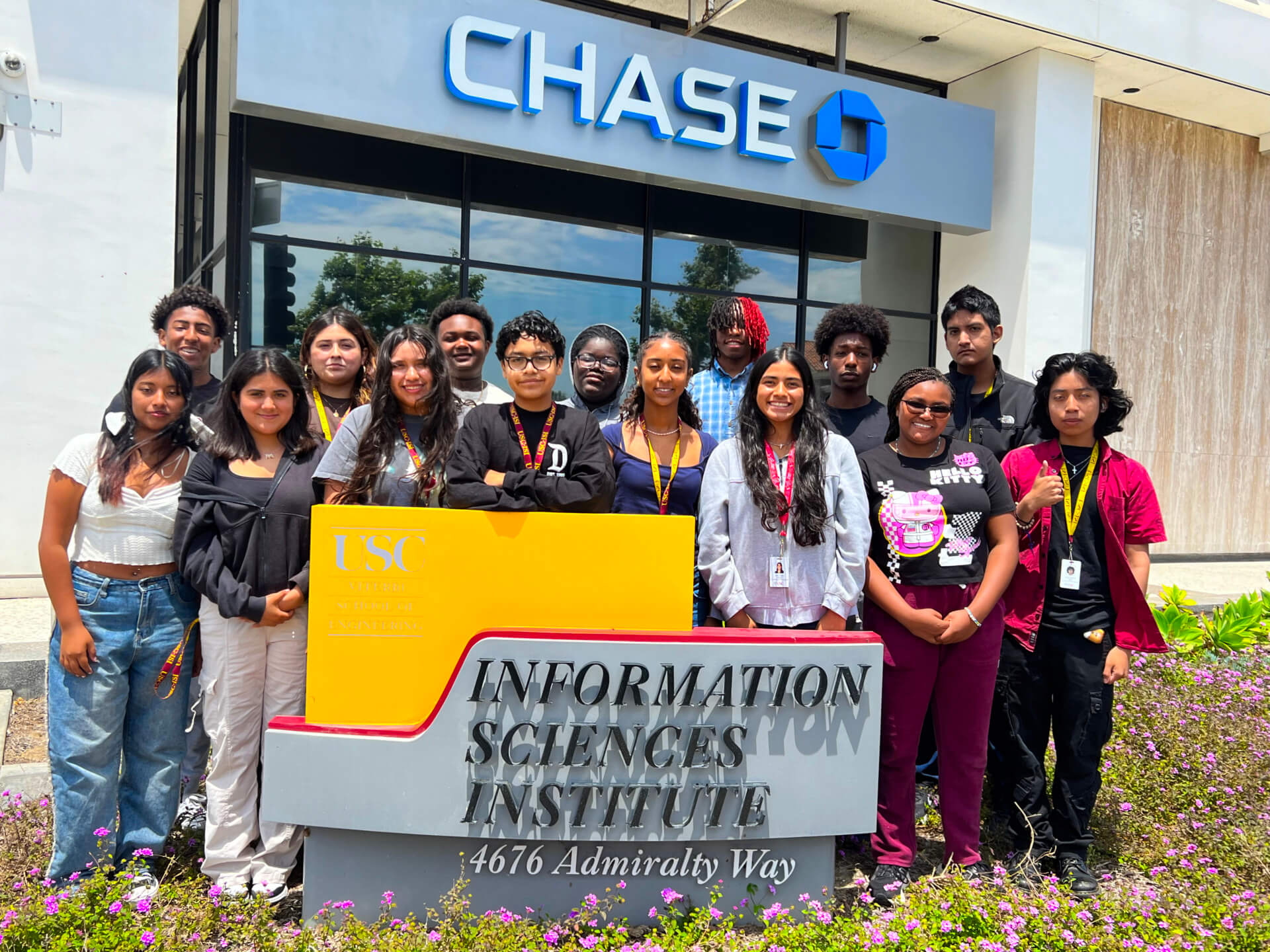
Photo credit: USC ISI
Published on August 29th, 2024
Last updated on August 29th, 2024




